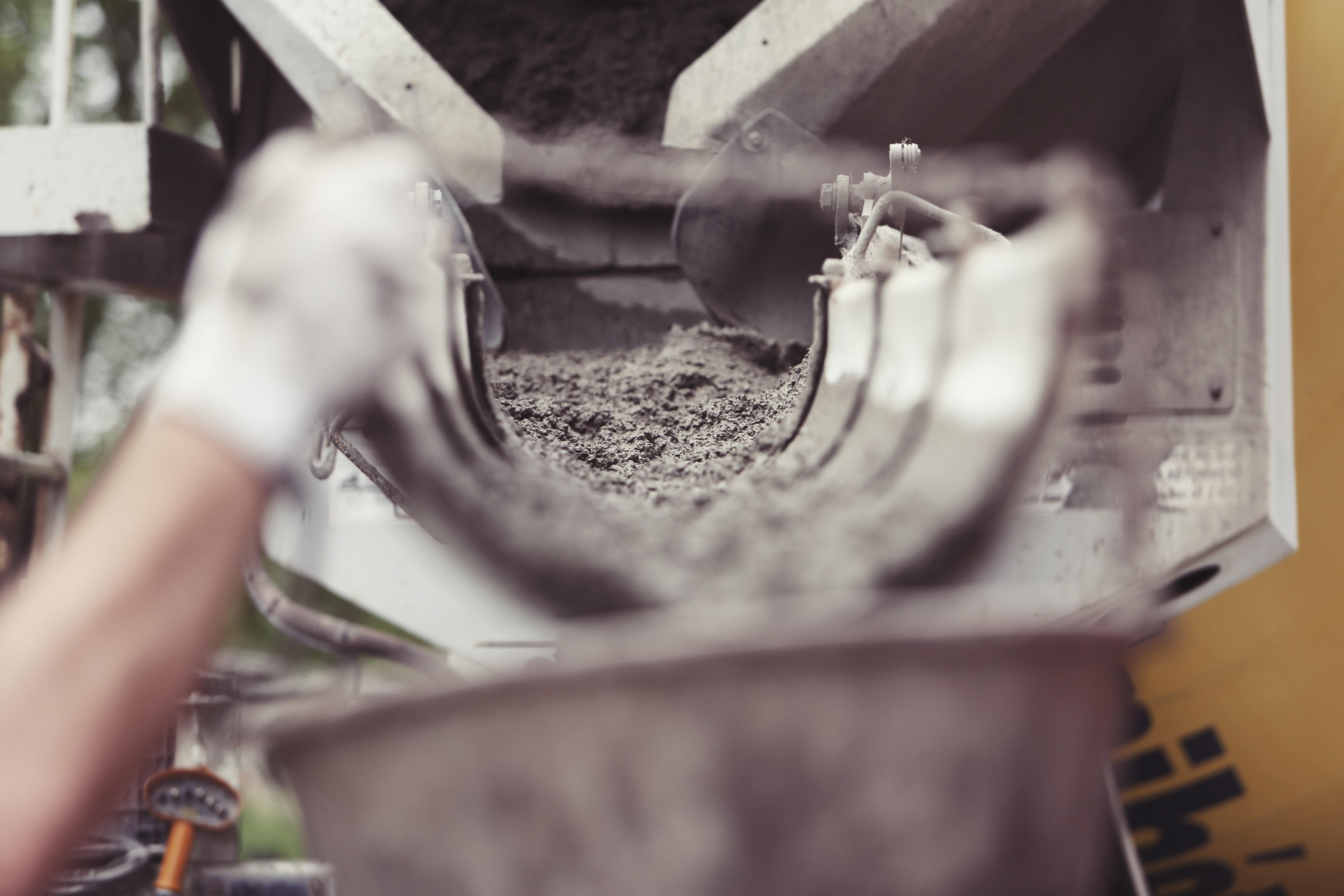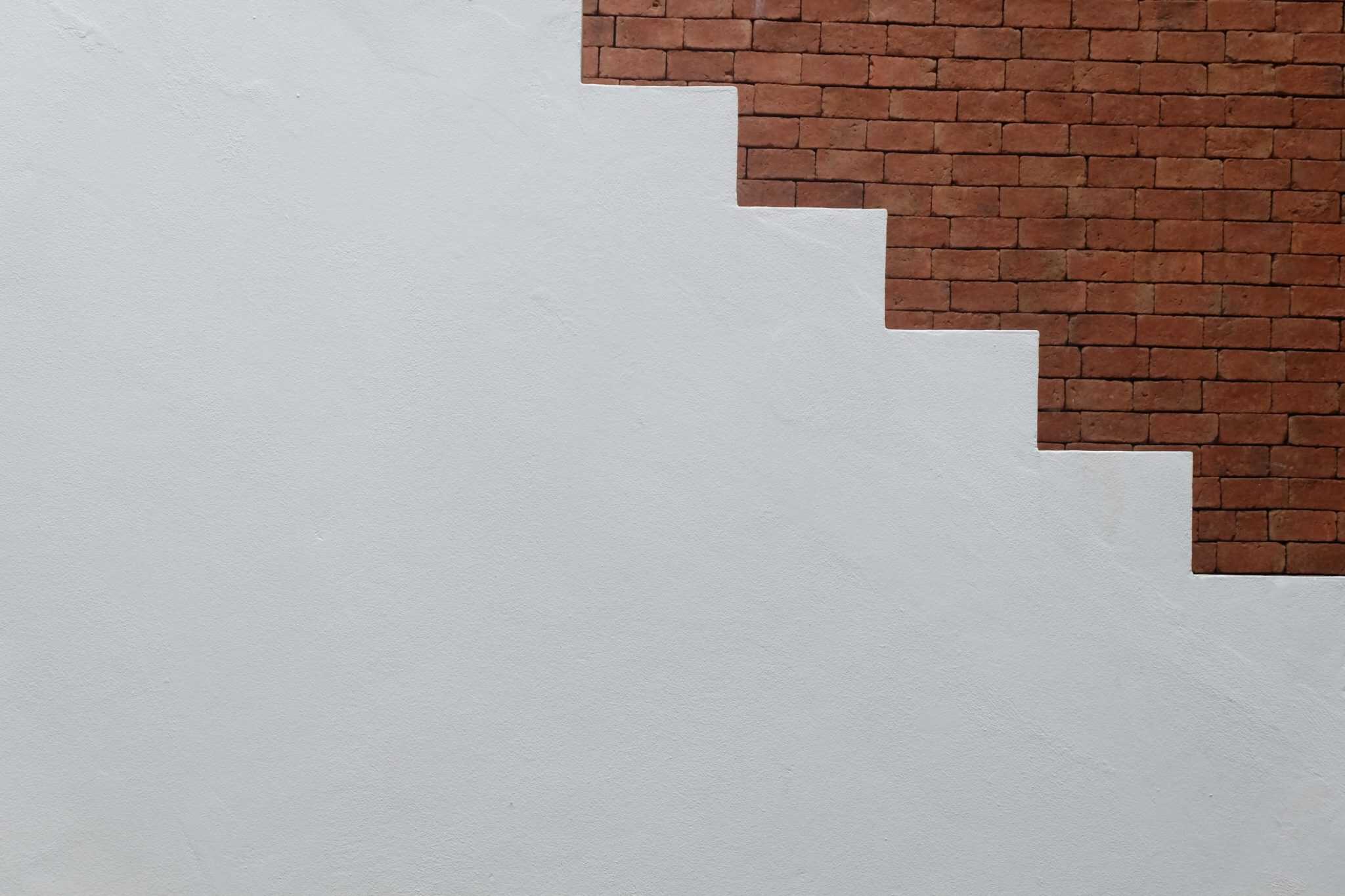
Concrete and cement are among the most common construction materials for buildings and public infrastructure, but also for DIY projects like patios, pavements or countertops. Most people do not distinguish between cement and concrete in their everyday language. You might have wondered though whether there is a difference between both terms.
The answer is: there are indeed a couple of differences between cement and concrete. In fact, concrete is a composite and it is made of cement mixed with other ingredients like sand or gravel. Before talking about the constituents of concrete, we will shed a light on the definition and the use of cement.
What is Cement and What Is It Made of?
Cement is basically a binder that helps binding other materials together. In the case of concrete or mortar, cement is mixed with so-called aggregates.
There are two main types of cement: Portland cement and Geopolymer cement.
Geopolymer Cement
Geopolymer cement consists of Aluminosilicates, alkaline reagents and water, supplemented with additives that accelerate the curing or hardening, for instance. Geopolymer is deemed to be the “greener” alternative to Portland cement as it produces less CO2 during its entire production process compared to Portland cement.
Portland Cement
Portland cement got its name from its look similar to natural Portland stone. This type of cement is usually produced based on limestone. The production process involves heating and grinding of limestone and clay elements and adding additional ingredients. Besides the carbon footprint of its production, the cement powder can cause damage to the skin and lungs in the case of an heavy exposure.
Nevertheless, Portland cement is one of the most common construction materials in the world. Thanks to the good availability of limestone or other limy basic materials almost everywhere in the world, it is a rather inexpensive but versatile construction material.
White Portland cement.
The national Portland Cement Association distinguishes between 5 types of Portland cement: Type I is deemed to be a generic multi-purpose cement. Type II can be used in projects involving groundwater or soil while Type III hardens much faster than the generic type. The main characteristic of Type IV cement is the lower heat during the hydration which causes a slower hardening process but increases its strength in the long run, compared to the other types. Type V comes with a high sulfate resistance. These are the generic types of Portland cement in a nutshell which are also supplemented by sub-types with their respective own characteristics. Of these five categories, Type I and Type II are the most commonly used types in construction and DIY.
Portland vs Geopolymer Cement
While Geopolymer cement is definitely the more environment-friendly choice, it is mostly used in professional and public projects with an increasing market share. Among DIYers and for projects around the house, Portland is still the prevailing cement for concrete production. However, this might change in the future due to improvements in the design of Polymer cement and increasing ecological consciousness in society. Find more details on cement on Wikipedia and check the price for different cement types on Amazon.
What Is Concrete?
Concrete has been a construction material for thousands of years in various forms. Nowadays, the term refers to concrete as a composite that consists of three components.
What Is Concrete Made of?
The three main ingredients of concrete are cement, aggregates and water:
Cement
The most common cement type used for concrete production is Portland cement. The resulting concrete is sometimes referred to as Portland concrete. There are numerous types of cement, however, one of the most interesting alternatives to Portland cement is Geopolymer cement, as introduced above.
Aggregate
Coarse material that is thrown into the mix. Amid various options, gravel, coarse stone like limestone or granite and sand are the materials most commonly used as aggregates.
Water
Adding water to a mix of cement and aggregate creates a liquid concrete that is shapeable and can be used for construction or shaping patterns. Cement in connection with water binds the materials together and produces a laser-like consistency.
All these components have to be properly mixed to make sure the desired chemical reaction takes place and to achieve a uniform concrete. In professional construction projects, steel or other material can be used to reinforce the concrete construction.
How Concrete Dries and Hardens
Once the concrete is produced and (hopefully timely) brought into place, the hydration phase begins: This phase describes a chemical process during which the cement becomes hard eventually. As the environmental factors of working with concrete vary (e.g. temperature and humidity), it is unlikely that they meet the ideal conditions for the hydration of cement. To facilitate the hydration of concrete, the water level of fresh concrete is managed in a process called ”curing”.
While this is also occasionally done by advanced DIYers for certain projects it is essential in professional construction to ensure the stability and durability of the cement. Curing aims to keep the cement sufficiently wet. This is usually done by adding water and preventing the concrete from drying out. While cement and water still maintain a chemical process for many years, concrete is deemed to achieve a considerable hardness within 1 to 3 weeks, depending on numerous environmental factors (Source).
How Concrete Is Finished
Visible concrete surfaces are often grinded, sanded, polished, finished and/or stained. This applies in particular to concrete in commercial buildings or private homes where the versatile functions of this construction material also need to cater for an appealing appearance.
Concrete sealer (find sealers on Amazon).
Mortar, Stucco, Plaster and Render: The other Relatives of Concrete
What Are Stucco and Plaster and What Are They Made of?
Stucco and plaster (referring to the exterior and interior application, respectively, of the same material which is also called render) is also a composite made of aggregates, a binder and water. The same holds true for mortar but the composition might slightly vary and the use is different: Stucco and plaster are used as decking and for sculptures and decorative elements, e.g. stucco reliefs or covings which are common for middle and southern European houses from the 19th century and older.
What Is Mortar and What Is It Made of?
Mortar, on the other hand, is applied in masonry to fix bricks and other construction material – you might be familiar with the term “brick and mortar businesses / stores / branches”. It is made of the same ingredients as render – sand and crushed stone as aggregates, cement and water – but the mixing ratio can vary: the different types of building stones used in masonry and the diverse environmental factors often require a tailored mortar to maximize stability and durability

Stucco vs. Plaster vs. Mortar: Differences in a Nutshell
All three materials consist of similar, if not identical ingredients: sand as aggregate, water and – in the old days – lime stone as a binder. Nowadays, Portland cement is probably the most common binder for the production of stucco, plaster and mortar though.
Use of Concrete in and around Private Homes
There are numerous options how you can use concrete around the house: it can be used for indoor and outdoor floors, for ceilings, countertops, pathways, stairs, walls, etc. Concrete can also be used as material for furniture, home decoration elements (e. g. flower pots). Its versatility also extends to the diversity of its appearance: it can range from an elegant marble-like look, different colors (stained and even unstained) to a rough industrial or minimalistic appearance. This also includes terrazzo, an elegant relative of concrete that consists of natural stone chunks (e. g. granite, quartz or even marble) and was used as a construction material for Hollywood’s Walk of Fame.
A pathway made with pavement molds (find them on Amazon).
One key factor for the final appearance of concrete is the kind of finish applied to it: The surface of concrete can be even and smooth if sanded with fine grits abrasive, but also rough and uneven as a matter of style.
How to Make Concrete for Your DIY Project in 4 Simple Steps
Making concrete yourself takes only four simple steps. But things can go south if you are not following the order and pay attention to the process.
- You need to buy the ingredients of concrete: choose the aggregates that you want use (e.g. a mix of sand and grinded stones) and order the cement (usually Portland cement, compare types and prices on Amazon in white or grey. Make sure you have a dusk mask, safety goggles and working gloves ready (check prices on Amazon if you need to buy them).
- Mix cement and aggregates together in a large bucket, container or a wheelbarrow, following the recommended mixture ratios for the particular cement that you bought. Recommendations vary but a common mixture is 1 part cement mixed with 3 parts sand and 3 parts stones or other aggregates. Slowly add water and mix it with a shovel until your concrete paste has the right consistency.
- Once the consistency of your concrete paste is perfect, apply the concrete to your project as quick as possible.
- After pouring your concrete, you should immediately clean all your equipment, i.e. bucket, wheelbarrow and shovel, before the concrete dries and hardens.
You can find further instructions on Wikihow (they will show you how to mix concrete but call it cement). Be aware that this simple approach is a perfect fit for small projects around the house. If you need a concrete construction with more durability and stability though, you will want to use a more advanced way of making concrete that will also include curing, for instance.
Take-away points
We have eventually covered a couple of terms and definitions in this article that are often mixed up or used interchangeably. Here is a final recap what exactly the similarities and differences are:
Cement (find it on Amazon) is a binder for concrete and facilitates the chemical process that let concrete harden. It is not wrong when people tell you they used cement for their garage or outdoor flooring. However, they likely refer to concrete, the construction material they actually worked with.
Concrete is a composite of which cement is only one constituent. The others are aggregates and water, as you might remember.
Stucco, plaster, mortar and render are a very similar material (if not the same thing in many cases). The respective term reflects the actual use of it rather than the underlying mixture: stucco relates to exterior, plaster to interior application and mortar helps to hold bricks or stones together.
Are you interested in using concrete for your next project? Learn more about working with concrete in our articles how to grind and how to sand concrete (did you know that you can even do it by hand, using certain sandpaper?) and share your experience with us!




I used to know it’s not the same but couldn’t tell whats the difference. Good article